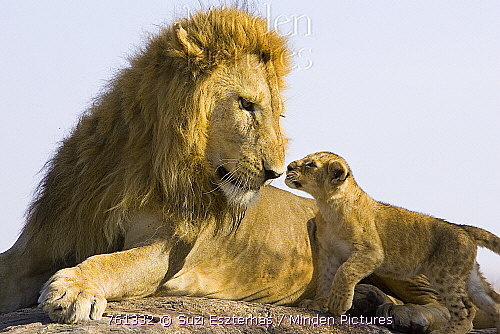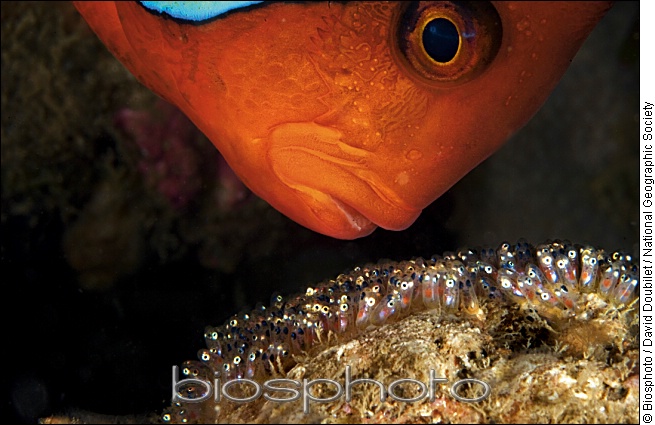I recently saw this photograph of a male Tomato Clownfish tending his developing eggs which got me to thinking about other examples of males taking an active part in care giving. Southern Cassowarys are large flightless bird related to Emu, Ostrich and Rhea. They live in rainforests in Indonesia, New Guinea and Australia. The male builds a nest on the ground – a mattress of plant material 2–4 inches thick and up to 39 inches wide. This is thick enough to let moisture drain away from the eggs. The female lays a clutch of three or four eggs. But it is the male that incubates the eggs and raises the chicks alone.
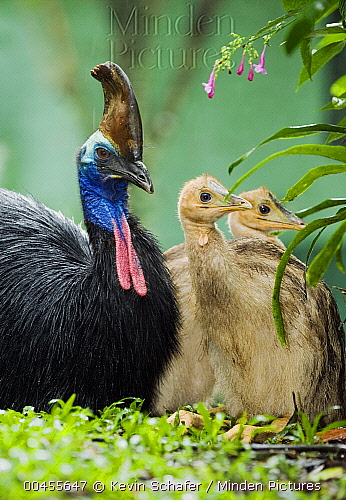
Male Emperor Penguins take egg-sitting duties for weeks while Mom heads to sea to hunt fish for her soon-to-hatch offspring. Males fast during this time period, but if the chick hatches before mama penguin returns, dad can still produce a curd-like substance, which he regurgitates to keep baby fed. In fact, males are so important to the brooding process that females seek out pudgy partners who can sit on eggs longer without food. 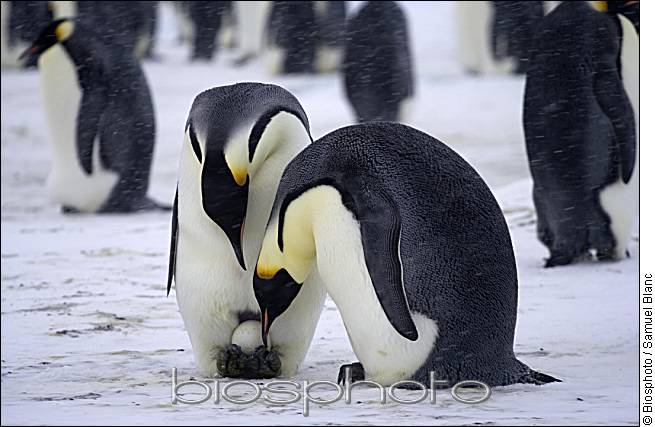 Spotted sandpiper ladies, it seems, get to have all the fun, at the expense of Dad. In this polyandrous species, the female is much larger than the male and mates with several males. She stakes out her bachelorette pad where she lures in a mate. The real kicker? After laying her four eggs in a ground nest, she flits off to find another guy pal, leaving the male sandpiper to incubate the eggs and then tend to the young for at least four weeks. Go papa sandpiper!
Spotted sandpiper ladies, it seems, get to have all the fun, at the expense of Dad. In this polyandrous species, the female is much larger than the male and mates with several males. She stakes out her bachelorette pad where she lures in a mate. The real kicker? After laying her four eggs in a ground nest, she flits off to find another guy pal, leaving the male sandpiper to incubate the eggs and then tend to the young for at least four weeks. Go papa sandpiper!

A male seahorse may be the ultimate catch. They not only get pregnant, brooding eggs in their pouch, but they’re monogamous and so mate for life. Here’s how it works: The seahorse mates intertwine their tails, and the female connects a tube, call and ovipositor, to the male’s pouch, through which she delivers her eggs. Inside the pouch, the male fertilizes the eggs and keeps them snug for two to three weeks, depending on the species. And like any good daddy, he monitors the salt levels inside his pouch to ensure they match the surrounding environment to keep the baby seahorses healthy.

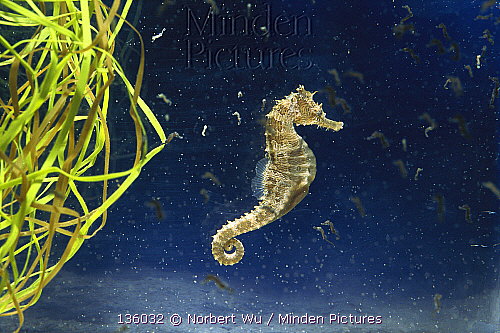
Talk about a formidable Dad. Direct contact with a wild three-striped poison dart frog can cause severe cramping, local paralysis, and seizures. The three-striped poison dart frog is believed to be the second-most toxic member of this genus, but they are also a remarkable example of male parenting. The three-striped poison dart frog lives in dense populations consisting of separate frogs living in close proximity to one another. As such, there are no “breeding gatherings” and males may court females at any time. Once the female is sufficiently impressed, she lays a small clutch of eggs, which the male then guards. When the eggs hatch, they are carried by a male to a source of water; sometimes a puddle, and sometimes a water-filled tree hollow. They are guarded by their father until their development is complete.

In damselfishes the male clears an area of debris and builds a nest. He then performs a series of in-water loops swimming in an attention-getting manner to try to persuade a number of females to lay their eggs in his nest. The females tend to choose the male that does the largest number of dips in a given period during his courtship dance as this presumably enables the female to evaluate the health and fitness of her potential egg-guarding partners.
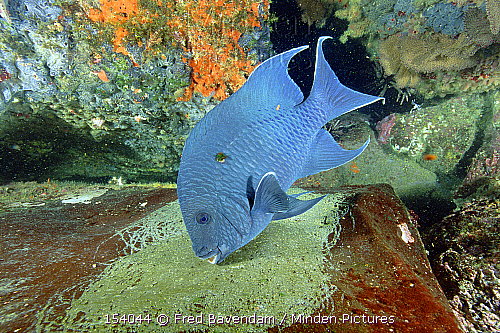
One more beautiful example for fatherhood: Madagascar Paradise flycatchers are monogamous. Females apparently select males based on their tail length, a form of sexual selection. The nests of this genus are neat deep cups placed on a branch or twig, often in a fork. They are usually placed 1–3 meters off the ground. They are often very conspicuous, particularly when the long-tailed males are incubating.

In honor of upcoming Father’s Day I am adding just one more photograph of a proud Dad:
